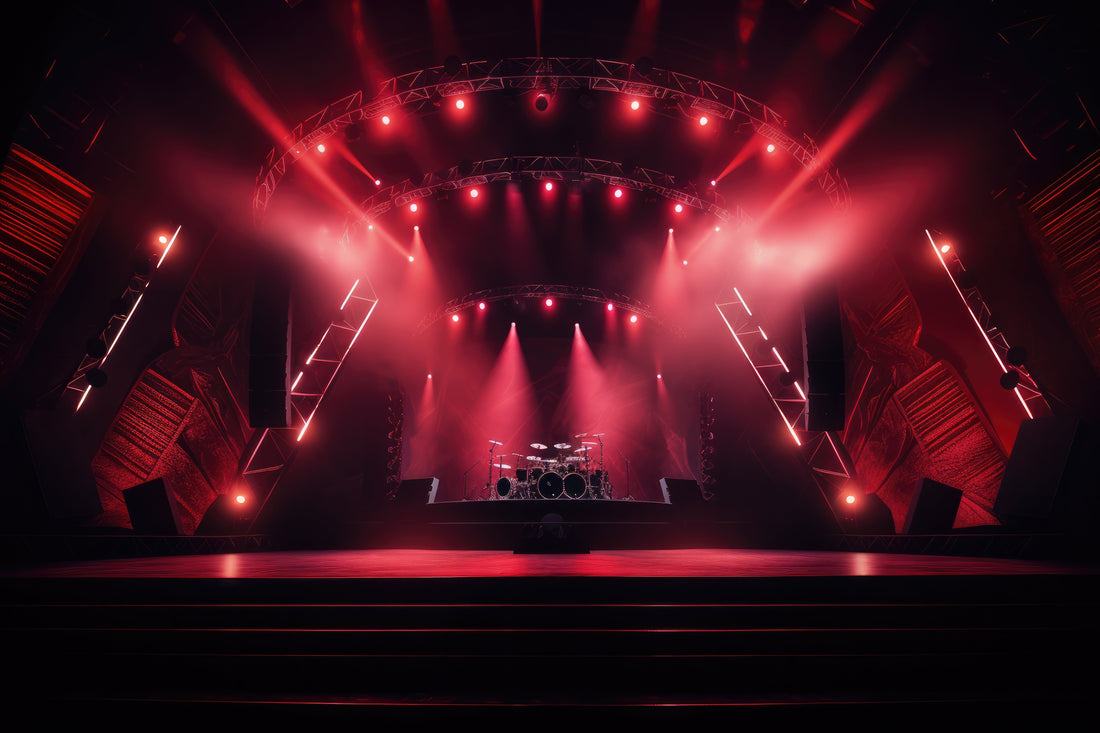
Stage Lighting 101: Illuminating the Art of Performance
Share
Stage Lighting 101: Illuminating the Art of Performance
Light, at its essence, is energy traveling in waves, perceived by our eyes as colors and brightness. Much like sound waves shape what we hear, light waves sculpt what we see. When strategically designed, stage lighting transforms into an artistic medium, elevating the ambiance and storytelling of any performance. To master this craft, understanding the fundamentals of stage lighting is key—just as a musician must learn scales before composing symphonies.
Why Stage Lighting Matters
Stage lighting isn’t merely functional; it’s a powerful tool for creative expression. Here’s why it’s indispensable:
- Visibility: Performances rely on light to be seen. Without it, the magic remains hidden. Stage lighting ensures every movement, expression, and set piece is visible to the audience.
- Mood Creation: From the haunting shadows of a suspenseful play to the vibrant hues of a concert, lighting shapes atmosphere. Subtle shifts in color, intensity, and positioning can evoke emotions that complement the performance.
- Focus and Balance: Strategic lighting guides the audience’s eyes to the most important parts of the stage while balancing visual elements. Whether highlighting a lead actor or softening the backdrop, it brings cohesion to a scene.
- Storytelling and Realism: Lighting can transport audiences to different eras, places, or emotions. Warm, dim lighting can evoke candlelit rooms of the past, while stark, cool tones suggest a futuristic setting.
- Dynamic Visuals: Beyond illumination, light sculpts performers and spaces. Angles, shadows, and colors can make actors and musicians appear larger than life or integrate seamlessly into their surroundings.
Essential Stage Lighting Fixtures
Before crafting your lighting masterpiece, familiarize yourself with the tools of the trade. Each type of fixture serves a unique purpose:
- Spotlights (Ellipsoidal Reflector Spotlights, ERS): Known for their precise beams, these lights are ideal for highlighting specific subjects or areas. With adjustable focus and the ability to use gobos for patterns, spotlights are a stage designer’s precision instrument.
- PAR Fixtures: Parabolic Aluminized Reflector lights are versatile workhorses, providing wide, even washes of light. Though less precise than spotlights, their affordability and coverage make them a staple.
- Fresnel Lights: Offering soft, diffused lighting, Fresnels bridge the gap between spotlights and PARs. Their adjustable beam angles make them perfect for creating gentle, ambient illumination.
- Moving Heads: These motorized fixtures bring flexibility and flair to a performance. With capabilities like color changes, gobos, and movement, they’re essential for dynamic shows.
Hanging and Positioning Light Fixtures
The placement of fixtures determines the overall effect. Here are foundational techniques:
- Single-Point Lighting: Mimicking natural sunlight, this technique is straightforward but can result in flat visuals.
- Two-Point Lighting: Adding a backlight creates depth and dimension, accentuating the subject's three-dimensionality.
- Three-Point Lighting: A popular choice for live performances, this setup minimizes shadows, ensuring clear visibility.
- Four-Point Lighting: Ideal for video recording, this approach eliminates unwanted shadows and adds background depth.
When installing fixtures, prioritize safety. Use secure clamps and safety cables, and consult professionals for complex setups.
Bringing It All Together
With these fundamentals, you’re ready to design stage lighting that captivates audiences and elevates performances. Whether you’re preparing for a small play or a large concert, remember: light is more than illumination—it’s an extension of the story. Experiment, refine, and let your creativity shine.
For tailored advice on choosing fixtures or designing your setup, don’t hesitate to consult stage lighting experts or trusted suppliers.
